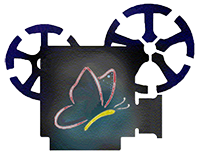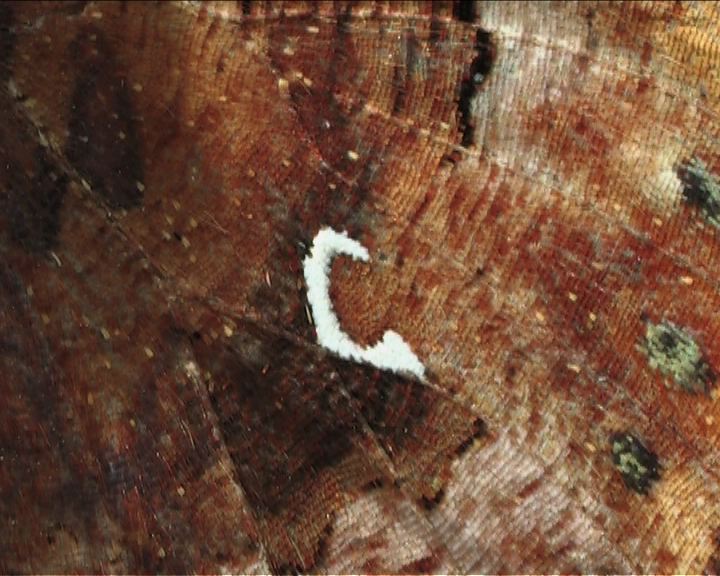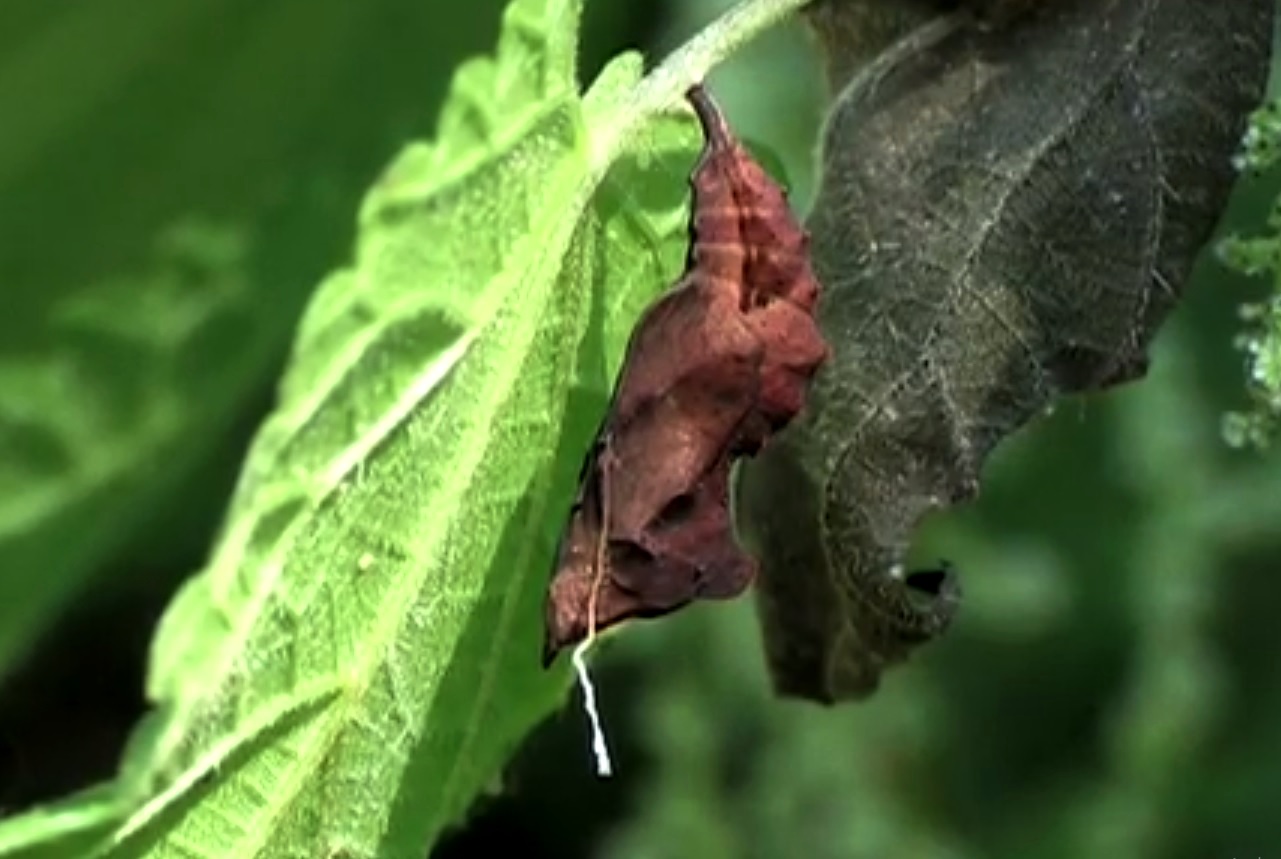

The Comma (Polygonia c-album (Linnaeus, 1768))
The Comma, family of Nymphalidae, is a common and widespread butterfly that flies in two generations between mid-May and early November. Males and females are alike. Butterflies of the second generation hibernate and from the first sunny days of February, the Comma leaves its shelter to feed.
Its angular wings are orange with brown spots on the upper side. The underside is marbled with brown. Wings closed, the butterfly looks like a dead leaf and offers excellent camouflage. Polygonia, translated from Latin "which has several angles", refers to the very angular wings. The small C-shaped white comma, on the underside of the wings, has given it the Latin name P. c-album and in English the name, Comma. The Latin C derives from the 3rd letter of the Greek alphabet "gamma" and "album" translated from Latin means white. In French this butterfly is named ‘le Gamma’.
The Comma is attracted to the sap seeping from lesions in trees, as we see here on this willow where it forages generously.
After mating, the female lays her eggs separately or in small groups on a leaf of nettle, hops, elm, hazel or willow, preferably in a semi-shaded, moist location. The pale-green egg incubates in 3 weeks for the spring generation and 2 for the summer. The instar 1 caterpillar is black, white and tawny and looks like a bird dropping. Very quickly dorsal spines develop. At instar 3, the white dorsal plate covers 2/3 of its body. At rest, the caterpillar takes an arched position and still looks, by its appearance and colour, like a bird dropping. After 4 moults, the pre-pupal caterpillar suspends itself using its false anal legs, the cremaster, to a stem in the low
Like most overwintering species, the Comma appreciates ripe fruits in autumn and tries to store energy for the winter.

Parasitoids
Sturmia bella Meigen, 1824, is a parasitoid fly belonging to the family Tachindae. It is an internal parasitoid, especially of vanessine nymphalid butterflies. The female’s lays minute hard-shelled, dark-brown eggs on the leaves where caterpillars feed. While feeding, the caterpillars will eat these eggs and the tachinid larva will hatch in the gut and develop inside the caterpillar and will not kill its host until the latter has pupated. The maggot egresses six day after the caterpillar has pupate, through the wing case and produces a proteinaceous strand as an ‘escape line’ to gently descend to the soil to pupariate.
Identified by Dr. Hans-Peter Tschorsnig
